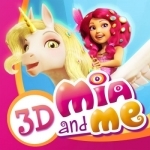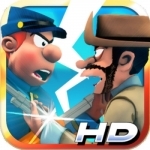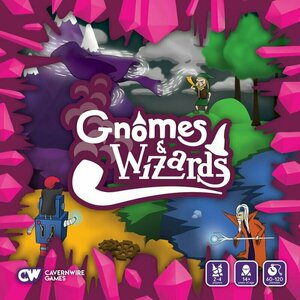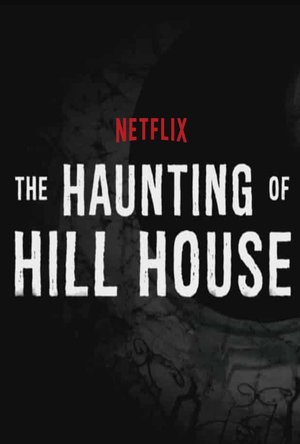
Aces of the Luftwaffe
Games
App
YOU have to show what you’re made of as the war over Europe is in full swing. Fight waves of Axis...

Backpacker™
Games and Travel
App
Your bag is packed and you’re ready to go, but as fate has it, you’re stranded in Rome with only...

Mia and me - Free the Unicorns!
Games
App
Life seems just perfect in the Elven Kingdom. But when the evil Gargona captures Mia's friends, you...

Farming Simulator 16
Games
App
Manage your own farm and drive massive machines in an open world! Farming Simulator 16 allows you...
Purple Phoenix Games (2266 KP) rated Gnomes & Wizards in Tabletop Games
Jan 21, 2020
Gnomes & Wizards is an area control, map deformation, dice assignment battle game where the players are attempting to earn the most victory points (VP) at the end of the game. Players gain VP by defeating other players’ active characters (clan leaders and tribesmen henchpeople), and having the most hit points (HP) between all their active characters at game end. Sounds easy, right? Read on, my friend.
DISCLAIMER: We were provided a prototype copy of this game for the purposes of this review. These are preview copy components, and the final components will probably be different from these shown. Also, it is not my intention to detail every rule in the game, as there are just too many. You are invited to download the rulebook from the publisher’s website, purchase the game through the Kickstarter campaign, or through any retailers stocking it after fulfillment. -T
As I mentioned in my disclaimer, I will not be explaining every rule for this one as there are quite a few little nuances that make it tick. However, I will cover the basic gameplay, and I will be focusing on a 2-player game for this preview.
To setup the game, each player receives all the components in their chosen color for their clan. A clan consists of a leader (which is represented by the cone on the board) and six tribesmen (henchpeople represented by discs with their specific icon). The board is an elaborate puzzle of triangular pieces that fit together beautifully and create a very interesting map on the table. In the middle of this puzzle map will always be the mine tiles – tiles that have pink power crystals outlining the inner icons. Each leader will have clips placed on their cards to keep track of HP and Defense, and these cards also show baseline movement speed and attack power. Once all players have completed their setup and the black dice have been rolled to determine the starting player, the game is ready to begin and the crystals are primed to be exploited.
Gnomes & Wizards is a game of dice manipulation and allocation at its core. Leaders and tribesmen will always have base movement, attack, defense, and HP, but the dice rolls can alter these. Perhaps you are a super-aggressive player and are just out to destroy the other clan(s). I have played that way and it works very well. If so, then when rolling you will want to concentrate your efforts on the move/attack die face. These add to either your movement speed or to your attack power (not both). Other die faces include defense (which raise your defense clip), horns (which can buy you an ability card OR help to call a tribe – more on this later), or collect power crystals.
Power crystals are used to charge clan abilities (printed on the clan board) and card abilities (attached to clansmen). You can earn your power crystals via die rolls or by passing through the mine tiles in the center of the board map. These power crystals, and the abilities they fuel, are very powerful and can make or break encounters against other clans.
Horns are what need to be rolled to bring more tribesmen on the board. Initially, each clan will only have the leader cones available on the board to play with until more tribesmen can be called to the fray. Rolling three horns and having a leader cone or tribesman disc on tribe-specific icon tiles will allow that tribe to be called onto the board. Did you only roll one or two horns? That’s okay, because horns are also used to draw ability cards from the deck. Draw as many cards as you have rolled horns and choose one of those to keep and the others are discarded to the bottom of the deck. You may attach certain ability cards to your clansmen to be charged by power crystals and used later, or keep certain other cards hidden in your stash to be used any time – even on another player’s turn.
The winner of Gnomes & Wizards is the player who earns the most VP by knocking out opponent clansmen/leaders and earning 1VP per HP remaining on active clansmen cards. I purposely left out a couple twists for you here. Your gameplan needs to be carried out in just 10 rounds in a normal game. So you only have 10 turns to create your all-star clan, earn power crystals, and beat up your opponents. Not enough? Okay how about this – after Round 5 each player will flip over two map tiles at the beginning of their turns – thus eliminating possibilities of calling clansmen to war because their icon is now flipped and unavailable. Each turn is incredibly important to maximize as best as possible as you only get 10 of them, and the map will begin to crumble away.
Components. Again, we were provided a prototype version of the game, so I will not comment on component quality, even though it’s already pretty good. I can see what CavernWire is trying to do here and I am very excited by the plans. The layout on the cards is great. The dice will be cool when final. The amazing power crystals will be a little fragile, so do take care of them, but the design is awesome. The best part about the components on this one – the colors. This game is so wonderfully colorful, and extremely attractive on the table. When playing at work, my coworkers all walked by the table and wanted to know what I was up to. I play games at work a lot, but this one was so vibrant and interesting that they wanted to know more – and they are all mostly non-gamers.
I find Gnomes & Wizards to be a game that I wish I could spend lots of time exploring every strength and weakness of each clan. Trying new strategies, and watching them be dismantled by newcomers. I have not seen every ability card yet. I have not played with each clan yet. But I want to. It’s a deeply colorful game with engaging mechanics (and lots of them) that I feel offers something special to a game collection. So if you are interested in grabbing a copy for yourself, head over to CavernWire’s website and hop on the Kickstarter campaign. Or purchase a copy from your FLGS or favorite online retailer. We dig it.

Crossword Puzzle - Redstone
Games and Entertainment
App
Join thousands of players who exercise their brains every day with the best crossword game for iPad...

King of the Course Golf
Games
App
Read on for important info below! "Everything you'd want out of an arcade style golf game."...

Weed Farmer
Games and Entertainment
App
Weed Farmer Homegrown The Top Virtual Growing Game Comes to IOS Have fun while learning to grow...

The Bluecoats - North vs South
Games and Entertainment
App
The Bluecoats - North vs South UNIVERSAL, colorful strategy! ¤ New : Multiplayer ! ¤ ...
Daniel Boyd (1066 KP) rated The Haunting of Hill House in TV
Nov 13, 2018 (Updated Nov 13, 2018)
However, after watching the first couple of episodes, I was struggling to get into it. Due to the massive amount of hype and praise that this show was getting I decided to stick with it. By the time I got to episode 6, I was done, but then my girlfriend guilted me into watching that rest of the series because she wanted to see it and she was, "too scared to watch it alone."
What a huge waste of time that turned out to be.
If you have read any of my other reviews of horror-based media, you will know that I have a love/hate relationship with the genre. There are very few horror movies or shows that I feel indifferent about. I hate lazy, formulaic bad horror and that is exactly what Hill House is.
Every single episode consists of a jumpscare at the start of the episode, then a hard cut either forwards or backwards in the timeline. Then about 15-20 minutes of piss poor acting and boring dialogue. This is followed by another cheap jumpscare, usually a woman screaming at an obnoxiously loud volume at the camera. Then we get another hard cut back to the other timeline.
The main issue with this structure, (other than being extremely lazy and repetitive,) is that when the hard cut is made to the other timeline, the audience knows that it is done by an editor and that we are now being asked to focus on a part of the story within the other timeline, but for the characters within the show, it makes no sense. For example, two people are having a conversation when something creepy happens. They go to investigate and a screaming woman comes launching towards them or is standing at the edge of a bed or doing basically any other ghost story cliché you can think of. Then the show cuts away to show the characters as children being haunted by a different ghost, but then when we cut back to the present, we never find out how the last jumpscare was resolved. What was the aftermath of that screaming lady at the end of the bed you ask? How was that resolved? How are the character's mentalities after this happened to them? Who cares?! Say the writers, let's just move on to the next cheap jumpscare.
The script is extraordinarily lazy and the child actors are horribly bad. This is an issue that I feel that there isn't really any excuse for anymore after the brilliant child performances in shows like Stranger Things and Season 2 of the Sinner.
If you judge the quality of something based on what it sets out to do versus what it actually does, then The Haunting Of Hill House is the worst show that I have had the displeasure of sitting through this year. The scares are pathetic, the acting is atrocious in places, the script is diabolically cheesy at times, there is hardly any originality present for an, 'original series,' and the show is overflowing with clichés. Not once did a jumpscare actually scare me, because they were all either laughably predicable or they would be totally out of place just for the sake of shock value and would merit a heavy sigh rather than an legit scare. The most egregious, offensively bad example of this was when two characters were having a conversation in a car in episode 6 and a ghost randomly screams from the backseat.
Please do not waste your time with this series, 2018 had so much brilliance to offer on the small screen and despite what you might hear from big publications, this is not one of them.

